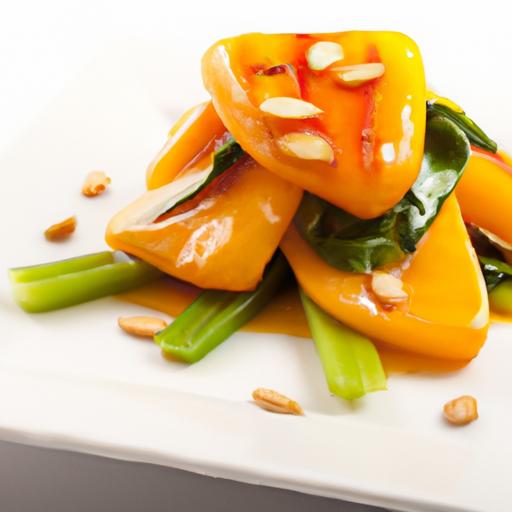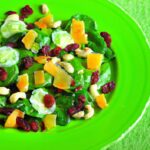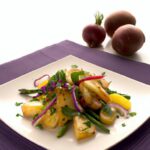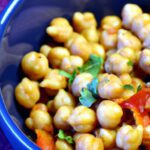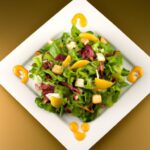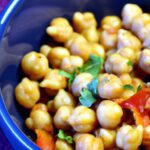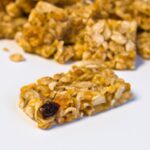When the day winds down and your body craves restoration, what you put on your dinner plate becomes more than just a meal-it becomes the fuel for your recovery. Whether you’re bouncing back from a strenuous workout, healing from an illness, or simply trying to recharge after a long day, the right dinner can work wonders in repairing muscles, boosting immunity, and replenishing energy stores. In this article, we’ll explore the best dinner foods that not only satisfy your hunger but also nurture your body’s natural healing processes. Prepare to transform your evening routine into a deliciously powerful ritual of restoration and vitality.
Choosing Nutrient-Packed Proteins to Rebuild Strength and Muscle
Fuel your recovery with a powerhouse recipe that synergizes nutrient-packed proteins, energizing complex carbohydrates, essential fats, and vibrant antioxidants – all crafted to rebuild strength, reduce inflammation, and promote healing after a demanding day. Inspired by the vibrant flavors of Mediterranean cuisine, this complete dinner bowl harmonizes the best dinner foods to heal and restore in a visually stunning, nutrient-dense plate.
Prep and Cook Time
Prep: 15 minutes | Cook: 25 minutes
Yield
Serves 4
Difficulty Level
Medium
Ingredients
- 1 lb skinless, boneless chicken breasts, sliced into 1-inch strips
- 1 cup quinoa, rinsed thoroughly
- 2 cups low-sodium chicken broth
- 1 large sweet potato, peeled and cubed
- 2 tbsp extra virgin olive oil
- 1 cup chopped kale, tough stems removed
- 1/2 cup pomegranate seeds (antioxidant-rich garnish)
- 1/4 cup chopped walnuts, toasted
- 2 garlic cloves, minced
- 1 tsp ground turmeric
- 1/2 tsp smoked paprika
- Salt and freshly cracked black pepper, to taste
- Juice of 1 lemon
- Fresh parsley, finely chopped, for garnish
Instructions
- Prepare the quinoa: In a medium saucepan, bring the chicken broth to a boil. Add quinoa, reduce heat to low, cover, and simmer until fluffy and broth is absorbed, about 15 minutes. Fluff with fork and set aside.
- Roast the sweet potato: Preheat oven to 400°F (200°C). Toss the cubed sweet potatoes with 1 tablespoon olive oil, salt, and pepper. Spread on a baking sheet and roast for 20 minutes or until golden and tender. Stir halfway through for even cooking.
- Cook the chicken: While potatoes roast, heat remaining olive oil in a large skillet over medium-high heat. Add garlic and sautée until fragrant, about 1 minute. Add chicken strips, turmeric, paprika, salt, and pepper. Cook until chicken is golden brown and cooked through, approximately 7-8 minutes. Stir occasionally to ensure even browning.
- Sauté the kale: In the same skillet, push chicken aside and add the kale with a splash of water. Cook until wilted, about 3-4 minutes, stirring frequently. Mix kale and chicken together, removing from heat when kale is tender.
- Assemble the bowls: Divide quinoa between four bowls. Top each with roasted sweet potatoes, turmeric chicken and kale mixture. Sprinkle with toasted walnuts, pomegranate seeds, and a squeeze of fresh lemon juice. Garnish with parsley for a pop of color and freshness.
Chef’s Notes
- You can substitute quinoa with brown rice or farro for a different texture and additional fiber.
- Replace chicken with grilled wild-caught salmon to increase omega-3 fatty acids and boost anti-inflammatory benefits.
- Sweet potatoes can be swapped with butternut squash or carrots to keep the vibrant antioxidant profile.
- Make ahead by roasting sweet potatoes and cooking quinoa earlier in the day. Store chicken and kale separately and combine just before serving to keep vibrant textures.
- For an extra zing, drizzle a tablespoon of tahini or a dollop of Greek yogurt on top before serving.
Serving Suggestions
Serve this nutrient-packed bowl warm or at room temperature. Accompany with a crisp side salad of mixed greens or a light cucumber-yogurt dip for refreshing balance. Garnish with freshly cracked black pepper and a scattering of microgreens to elevate presentation. Visual contrast of bright orange sweet potatoes, vibrant green kale, ruby red pomegranate, and golden turmeric chicken makes every bite as delightful to the eyes as to the palate.
| Nutrient | Amount per Serving |
|---|---|
| Calories | 480 |
| Protein | 38 g |
| Complex Carbohydrates | 45 g |
| Fats | 18 g (mostly healthy fats) |
| Fiber | 8 g |

By centering your dinner around nutrient-packed proteins to rebuild strength and muscle, paired with sustained-release carbohydrates, healthy fats, and powerful antioxidants, you’ll optimize your body’s restoration process. For more delicious recipes that support healing and energy, check out our Healthy Dinners for Muscle Recovery article. For insights on antioxidants’ role in inflammation, see this trusted resource from NCBI.
Q&A
Q&A: Fuel Your Recovery – Best Dinner Foods to Heal and Restore
Q1: Why is dinner such an important meal for recovery?
A: Dinner is the final refuel of the day, providing your body with essential nutrients to repair muscles, restore energy, and support overall healing while you sleep. It’s like planting the seeds for tomorrow’s strength and vitality.
Q2: What types of foods should I focus on to maximize recovery at dinner?
A: Think of your dinner plate as a recovery toolkit. Prioritize lean proteins (chicken, fish, tofu) for muscle repair, complex carbohydrates (quinoa, sweet potatoes) to replenish glycogen stores, and plenty of colorful vegetables for antioxidants that reduce inflammation. Healthy fats from sources like avocado and nuts also play a crucial role in cell rebuilding.
Q3: Are there specific nutrients that boost the healing process?
A: Absolutely! Protein is the star player for tissue repair. Omega-3 fatty acids work wonders to calm inflammation. Vitamins C and E, found in fruits and veggies, help protect cells from damage. Zinc supports immune function, and magnesium aids muscle relaxation and recovery.
Q4: Can I eat too much at dinner and hinder my recovery?
A: Moderation is key. Overeating can disrupt sleep and make your body work harder to digest. A balanced meal with the right portions ensures your body uses nutrients efficiently, promoting restorative rest rather than taxing your system.
Q5: What’s an example of a perfect recovery dinner?
A: Imagine a plate with grilled salmon providing omega-3 and protein, a side of roasted sweet potatoes for slow-burning carbs, steamed broccoli bursting with antioxidants, and a drizzle of olive oil for healthy fats. Finish with a small bowl of berries for a vitamin-packed antioxidant boost.
Q6: Should I avoid certain foods at dinner if I’m trying to heal?
A: Try to limit processed foods, excess sugar, and fried items that can increase inflammation and slow down recovery. Also, avoid heavy meals high in saturated fats that might interfere with restful sleep and digestion.
Q7: How soon after exercise should I eat dinner to optimize recovery?
A: Aim to eat within 1-2 hours after your workout. This window helps your muscles soak up nutrients like a sponge, jumpstarting repair and glycogen replenishment. If dinner is later, a small recovery snack right after exercise can tide you over.
Q8: Can hydration impact evening recovery?
A: Definitely! Proper hydration supports every phase of recovery, from nutrient transport to toxin elimination. Sip water throughout the evening and consider herbal teas like chamomile to promote relaxation and restorative sleep.
Q9: Is it okay to have plant-based dinners for recovery?
A: Absolutely. Plant-based dinners rich in legumes, whole grains, nuts, seeds, and vegetables can provide all the necessary nutrients for healing. Just be sure to combine protein sources for complete amino acid profiles and consider foods fortified with B12 or supplement as needed.
Q10: How can I make recovery dinners enjoyable and sustainable?
A: Experiment with spices, herbs, and vibrant produce to awaken your palate. Plan meals around seasonal ingredients for freshness and variety. Remember, recovery food should nourish both body and soul-delicious meals are more likely to become lasting habits.
Fuel your recovery with intentional dinners that heal, restore, and prepare you for whatever tomorrow brings. Your body deserves more than just a meal-it deserves a feast of recovery!
In Summary
As the day winds down and you prepare to rest, remember that recovery doesn’t happen by chance-it’s fueled by mindful choices that nourish your body from within. By embracing dinner foods rich in essential nutrients, you’re not just feeding hunger; you’re planting the seeds of healing and restoration for tomorrow’s strength. So, let every bite be a deliberate step toward rejuvenation, turning your dinner plate into a powerful ally in your journey to feel renewed, resilient, and ready to take on whatever comes next. Here’s to meals that heal, restore, and fuel the best version of you.